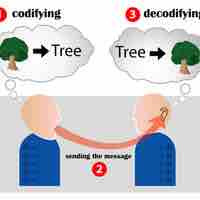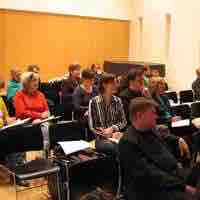Chapter 7
Analyzing the Audience
By Boundless
The more you know and understand about the background of your audience and their needs, the better you can prepare your speech.

Analyze the audience to find the mix of ages, genders, sexual orientations, educational levels, religions, cultures, ethnicities, and races.

Use knowledge about your audience to step into their minds, create an imaginary scenario, and test your ideas.

Since individuals of the same generation often share similar values, beliefs, and attitudes, age is an important variable to consider.
A speaker has an opportunity to address years of masculine and feminine gender role conditioning through the use of inclusive language.

The sexual orientation of your audience members should be taken into account when giving a speech.

Consider both the formal education and the self-directed learning of the members of your audience to adapt your speech content.

Understanding the religions in your audience will help you relate to the members and avoid excluding members of differing religions.

As society becomes more diverse, the speaker will find it useful to learn more about the cultures, races and ethnic groups in each audience.

Audience members who belong to the same group are likely to share values, beliefs, and attitudes with other members of the group.

Consider physical contexts—traditional face-to-face with co-located audience versus delivery via videoconference to remote audience(s).
Use psychographics of values, needs, attitudes, and beliefs to develop an audience profile and to tailor the speech's specific message.

Examine favorability in relation to how the audience views both you and the topic for your speech.

Consider the knowledegeabilty of your audience, prior to the speech, formative during the speech, and summative after the speech.

Use direct observation of small audiences and use interviews, surveys and Likert rating scales to collect data about larger audiences.

Apply knowledge about the audience to adjust the message before speaking. Observe and process audience responses to further adjust while speaking.